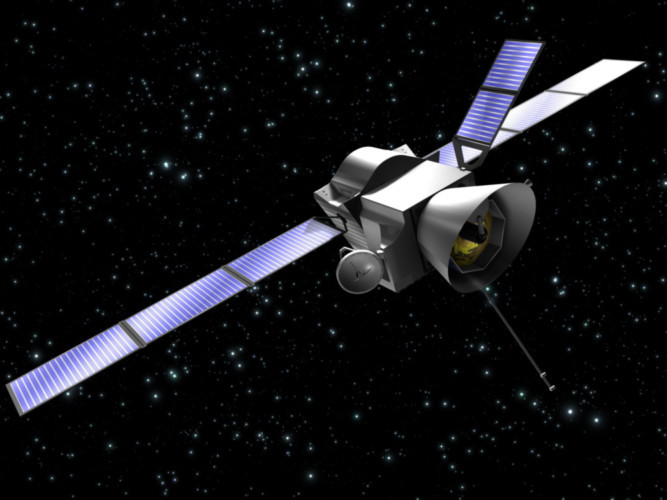Dundee is set to play a major role in a joint European and Japanese mission to Mercury.
Staff at Nethergate-based Star-Dundee are adapting their SpaceWire technology for use aboard the BepiColumbo mission to the closest planet to the sun.
The company a spin-out from Dundee University is providing the hardware which acts as the spacecraft’s “nervous system”, connecting much of the on-board computing technology which will be used in the scientific exploration of the smallest planet.
The firm has been involved in a number of successful missions on spacecraft collectively worth more than $10 billion, and its SpaceWire technology has become an industry standard.
It is also involved in the James Webb Space Telescope project which NASA plans to launch into deep space orbit in 2018 to probe the far reaches of the solar system.
Professor Steve Parkes, managing director of Star-Dundee and a director of the Space Technology Centre at Dundee University, said the company had an international reputation in the aerospace community.
He said: “We spun out (from the University of Dundee) 10 years ago and have grown each year since then.
“We work with the world space agencies and the aerospace industry to provide computer network for use in spacecraft.
“SpaceWire is a technology developed at the University of Dundee with input from engineers across Europe.
“It is similar sort of network technology to USB but it is simpler and it has much more flexibility in many ways.
“The way to think of it is that SpaceWire is like the nervous system of a spacecraft.
Professor Parkes, recognised with a Specialist Bronze Award from the Royal Aeronautical Society last month for his role in the development of SpaceWire, said the Mercury mission was technically challenging but he was confident SpaceWire was up to the job of operating in the harsh space environment.
“Mercury is obviously the nearest planet to the sun and there is a joint ESA (European Space Agency) and JAXA (Japanese Aerospace Exploration Agency) mission.
“The spacecraft are in the process of being finally tested and integrated at the moment and should be going to Mercury reasonably soon. Our technology is being used on both the European and Japanese elements.
“The spacecraft has three main parts: the mother spacecraft which carries two other spacecraft out to Mercury; the Mercury polar orbiter will go into polar orbit around Mercury that is the European part; and the Japanese part of the Mercury magnetic orbiter will map the magnetic fields.
“The Mariner 10 went to Mercury quite a long time ago, and recently there has been a NASA mission there, and this joint European and Japanese mission will complement the work done by NASA.
“This is a very demanding mission,” he added.
“It is fraught with danger but, if successful, it will provide some very significant scientific information.
“When the tech gets put on board a spacecraft it gets very well tested. It will not be launched until many engineers are confident that it will work.”
Star-Dundee employs 16 people and works side by side with the university’s space technology centre in a building on Nethergate.
Professor Parkes said he was keen to see the company grow and ensure Dundee maintained its position at the forefront of space exploration.
He said: “We are well known in the aerospace world. We are well known in Japan, China, Russia and America and across Europe, but locally we are not very well known as there are not many people building spacecraft in Scotland.
“Being a company we are interested in a commercial return. We are interested in growing the company and on working on future space missions.”
business@thecourier.co.uk
